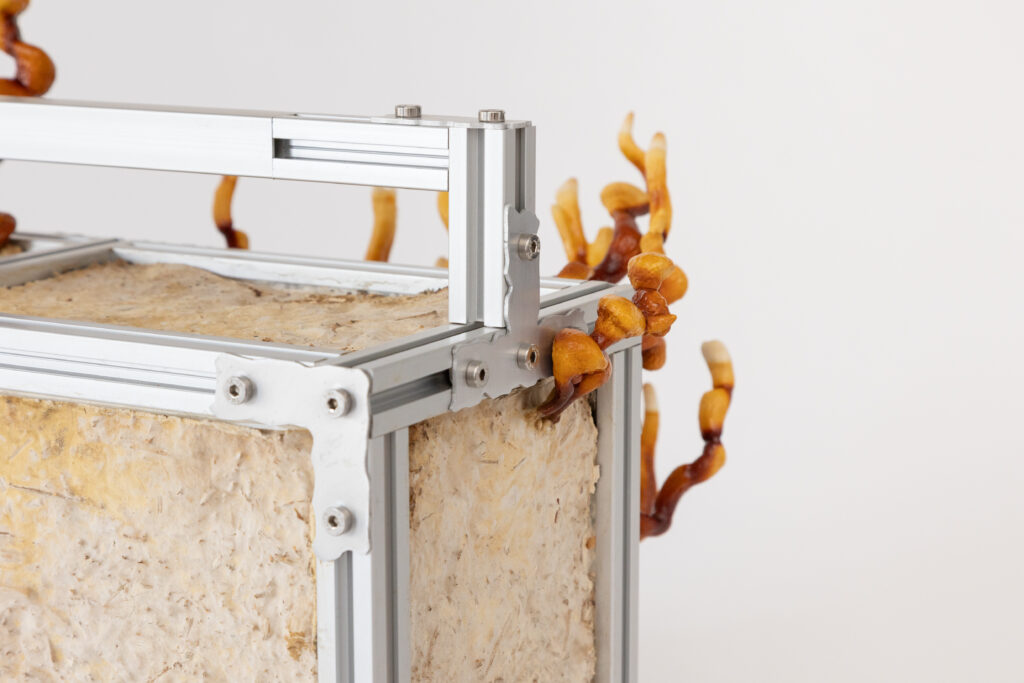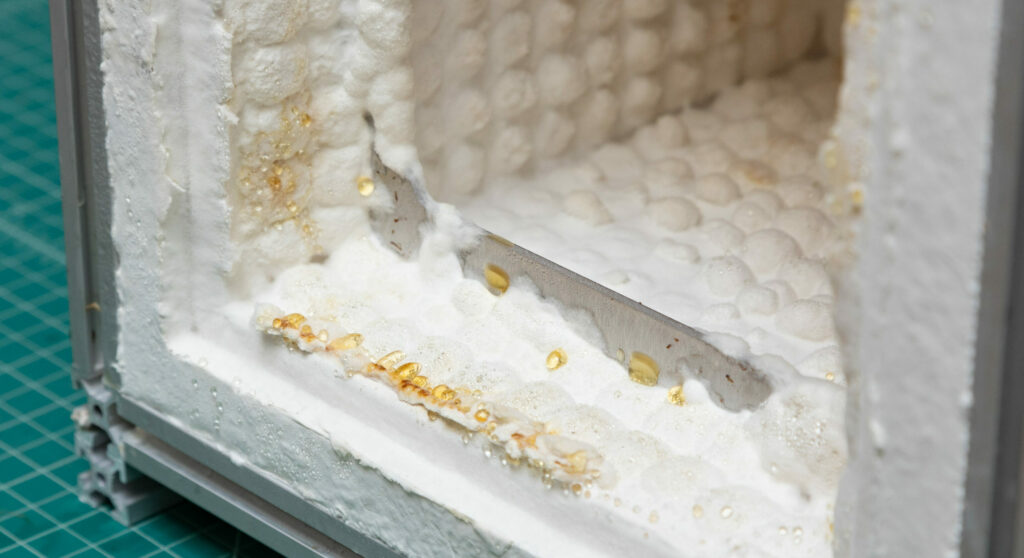
Fungi, Form, and Future: How 10th Floor Studio Weaves Art and Ecology.
Jerome Tavé and Kyle Lawson, Founders of 10th Floor Studio in conversation with Natsai Audrey Chieza
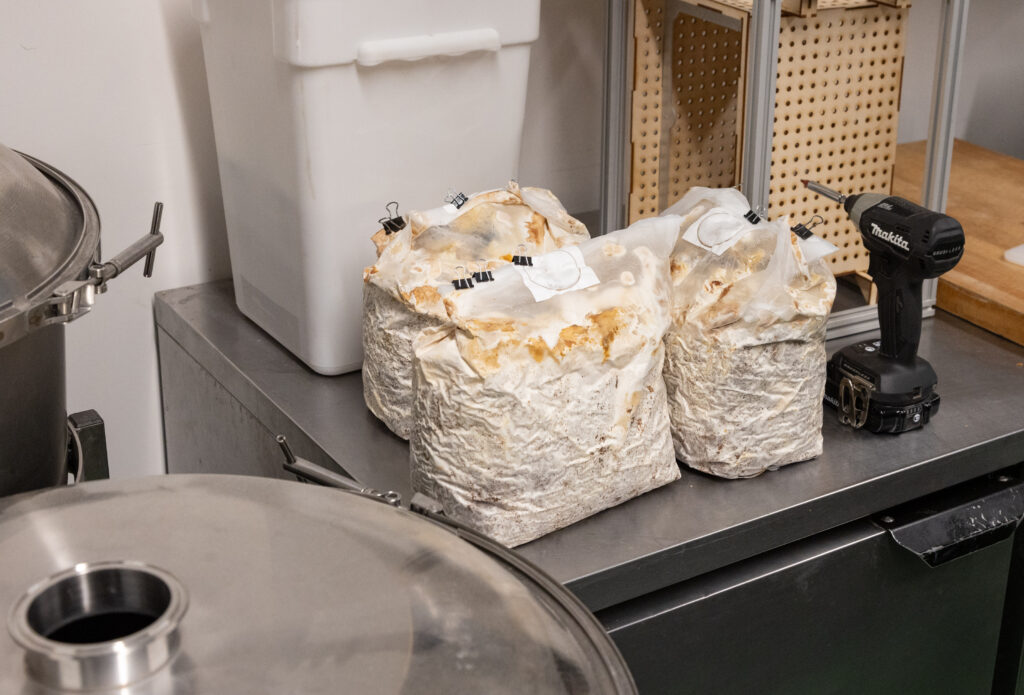
Technology meets Nature
We’re here in San Francisco’s Bay Area, the peninsula of technological acceleration. How does the specificity of the culture of technology here manifest in 10th Floor Studio’s artistic practice, if at all?
We’ve come so far as a species in respect to technology—the tools exist, and our approach is to question how we can grow and evolve in positive ways with the tools that we have. In the Bay Area, both virtual and physical spaces—architecture included—feel very sterile. This modernist, sanitary aesthetic is a universal phenomenon. In a way, decomposition and transformation are two of the biggest themes in our work. Even at a small scale, our projects become nutrients for future things, future ideas.
I’m hesitant to use “biotechnology” as a term to describe the work that we’re doing. It’s a field that implies that humans know best. The way in which we’re orienting to the organism, is through biological leadership, not the other way around. There’s a place for using the building blocks of life—in fact one of my first roles was teaching students how to transfer a fluorescent gene from jellyfish into E.coli and learning the process of PCR—so I don’t feel like a purist in that respect. But from an art practice perspective, it feels intuitive to work collaboratively with nature in a way that is more attuned to biological affordances, needs and limitations. While we have certain visions and goals for what we want to achieve through our practice, the organism is still very much in the driver’s seat.
Many designers responding to climate catastrophe have perhaps initially lacked the right toolkits, leading with a mechanistic mindset—and are now embarking on a journey of unlearning. There is something in your encounters with mycelium that represent an undoing of assumptions and a decentering of ourselves.
There is a parallel world out there of regenerative agriculture and ecosystem restoration, which has taught us that nature holds an innate capacity to heal itself. The Silicon Valley mindset of technology being the ultimate solution to the environmental and social crisis, feels somewhat arrogant. What if we just got out of the way, maybe the problem would fix itself? That’s one of those things where being here, the contrast is very present. I’m curious to see what could happen if we shifted from this obsession with ownership, scale and profitability, towards the health and wellbeing of the land and environment we are a part of. At the same time, it’s wonderful to be here because people are so innovation-minded.
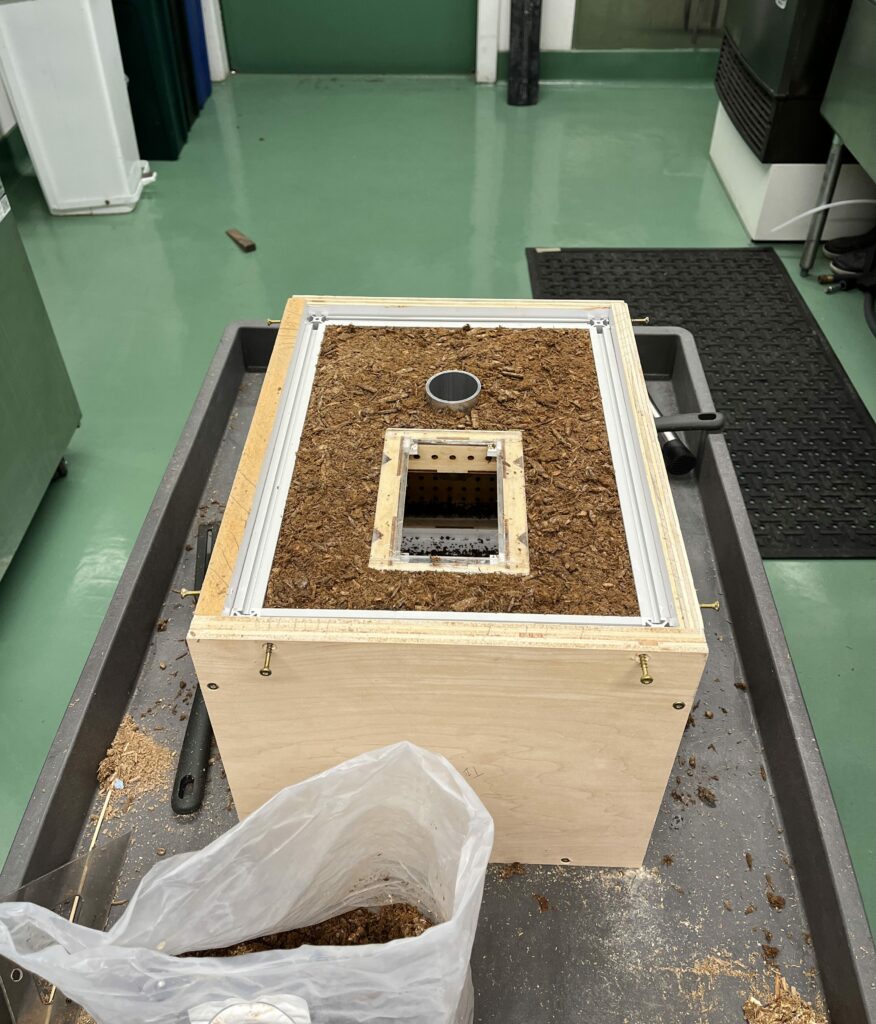
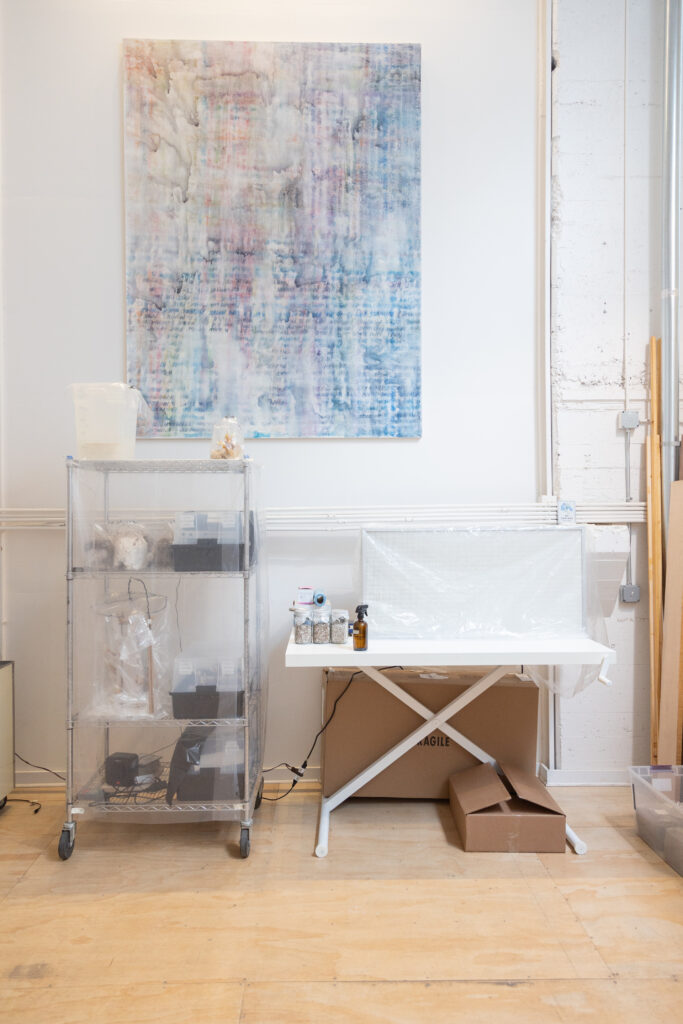
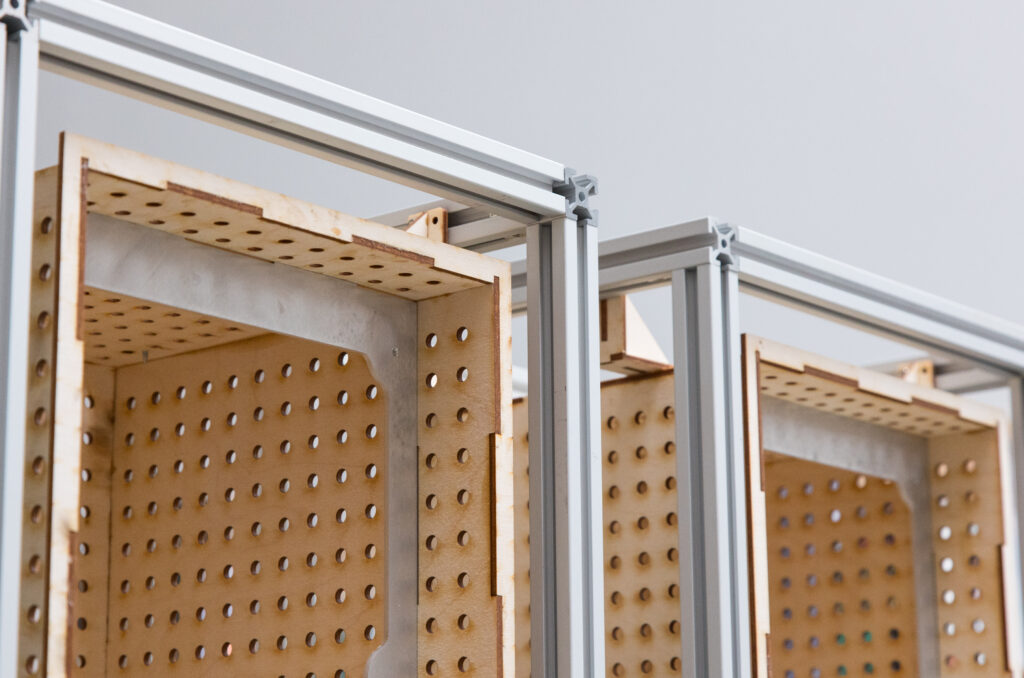
“From an aesthetic perspective the contrast is quite severe, but from the “metabolic” point of view, both materials embody the beautiful cycle.”
Embodied material Synergies
What’s striking about your work is that you have been practising bio-designers for many years, and yet you’ve mentioned that you don’t necessarily categorise yourself as such. How do you situate your design practice in relation to other work happening in this field?
I’m an industrial designer and soil nerd, so our material exploration is a holistic one, pairing aluminium with mycelium. The aluminium is representative of our extractive past, translated into the present. It’s one of the most common metals in the crust of the earth, but you will never find it in the exact form observed in our pieces, because it takes so much processing and specialised knowledge to be able to realise it as a technical material. The microbial biodiversity of soil has informed my design practice ever since I’ve been interested in this field. Jerome grew up in a region of France where the mushroom is an emblem on the local flag, and foraging is bread and butter. We both came together—and came to fungi—in this beautiful, distinct way. We marry these two distinct worlds—the rigid, industrial one with the organic, warm, and trophic living—to weave in the reflective element of humanity and human-made matter in conjunction with the organic world that we are part of but that we so often deny. It is a statement of biological unity, and a reminder that any harm we cause to the wider ecosystem is self-destructive. Part of navigating this line was to distance ourselves from the designer’s perpetual pursuit of problems and solutions, and move towards an adjacent, fine art practice, in which we are more intuitive with exercising our creativity.
Rather than centering solutions, you are focusing on creating the right conditions for new knowledge, aesthetics, and synergies to emerge. Can you tell us more about that?
There’s actually a lot more overlap between these two materials than we initially realised—both are strong in their own unique ways and are characterised by their circularity.
Aluminium takes a fraction of the energy to recycle as it does to create new, and so because of that 75% of all aluminium that has been made by humans is still in use. With mycelium, it’s not something we notice every day, but fungi have existed on this planet much longer than we have. By decomposing organic matter and converting it into carbon dioxide, this organism helped life emerge from the sea onto the land; on one hand it’s extremely alien, but on the other, it’s our ancestor. Working with mycelium is a recurrent experience of awe and a continual point of learning. To bridge these material worlds—the mycological and mechanistic—we’ve purposefully cut aluminium brackets that are jagged and more organic in form—rather than linear and geometric—with deep red mycelial fruiting bodies reaching out. So, from an aesthetic perspective the contrast is quite severe, but from the “metabolic” point of view, both materials embody the beautiful cycle.
Mycelium is one of the living systems that instigates a profound mental shift and sense of self amongst those experimenting with it as a medium for art and design. Timothy Morton writes about how the Industrial Age dramatically severed human beings from the living world, with the Anthropocene as a direct consequence. I like to think of mycelium as this relatively low-intervention or therapy that through the embodied act of making, acts as a portal reconnecting us with the living world. Have you encountered this through your making or growing process?
I agree. It always brings up questions of the “self” and multiplicity. When we’re working with mycelium, we grow it as a monolithic culture and then literally pulverise it to pack it in a certain form. Once it reconnects and comes back together, is it a million different organisms, or is it just one? Part of the process is seeing what the organism is capable of and those learnings inspire what we have tried to do with it. For example, figuring out the kind of small openings these fruiting bodies want to emerge from, how to direct that growth, and its response to touch.
One of the most significant outputs of our work is what we are taught by our collaborations with these organisms. We reintegrate that continually into our work, and we learn something. There are a lot of practices, whether creative or agricultural, where people are working with other species, approaching it in a way that cultivates or extracts. There’s an element of restriction. Our practice involves a necessary release of control and being humbled by what happens. If something doesn’t work, it’s a direct reflection of the fact that perhaps we pushed too hard this time, or maybe we were too closed-minded about the desired outcome.
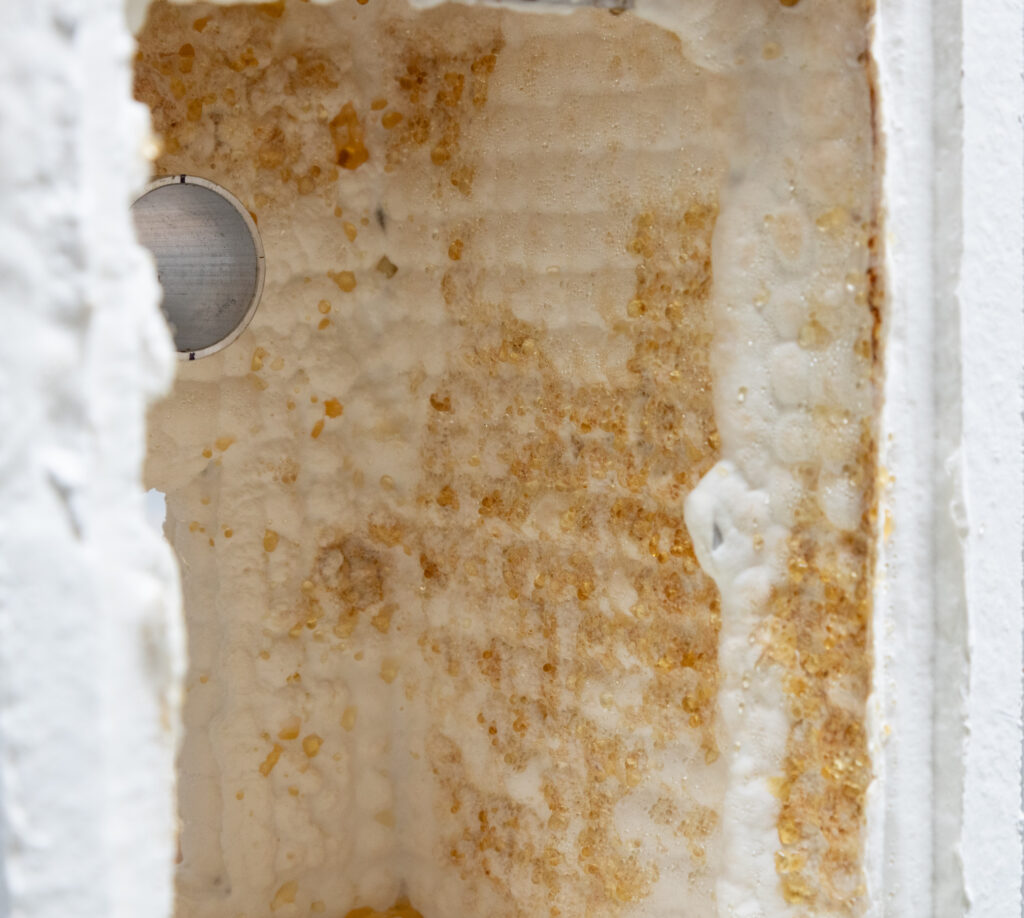
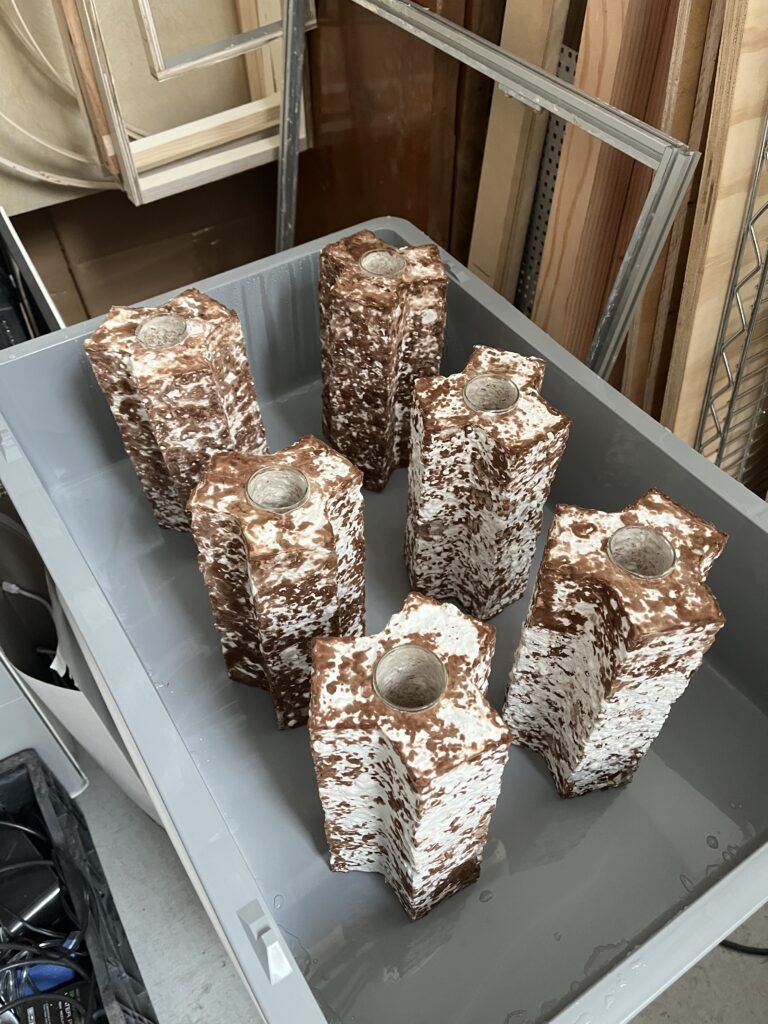
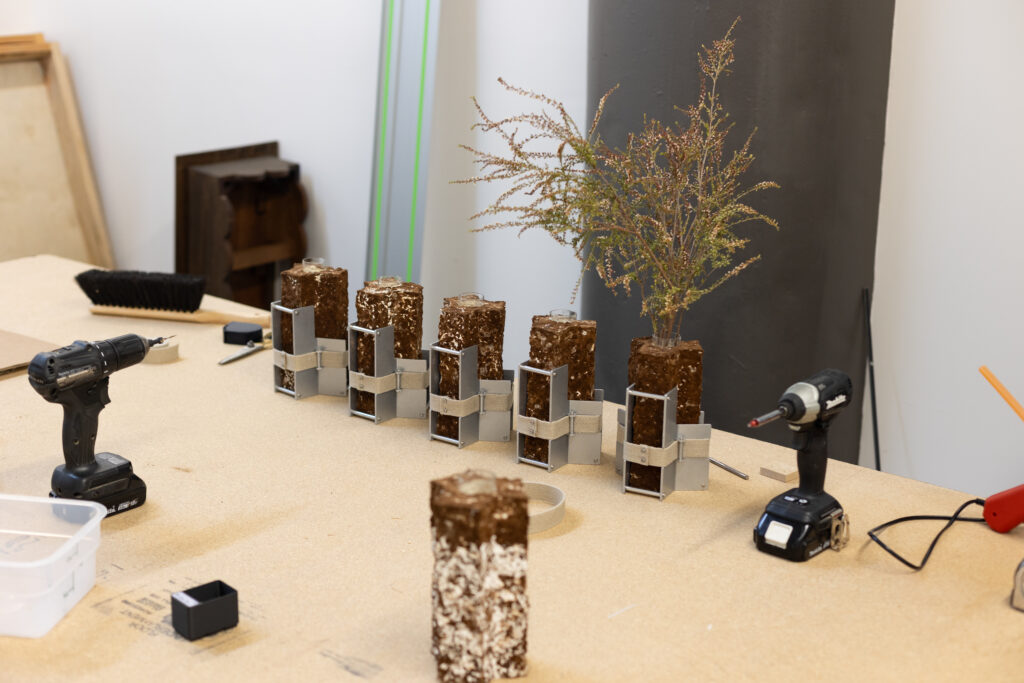
Seeding Local Creative Ecosystems
What I have always carried with me as a designer immersed in this field, is that whenever we see technology as the answer, more often than not, the problem that it tries to address is too complex for a single company or organism to solve—even with significant investment. For me, it really concretises the importance of art practice and of making projects that don’t necessarily scale, because of what they can teach us. We gain many ways of imagining and creating the future, which also opens us up to working with a range of collaborators, right? What has been your approach to collaboration as a way to expand where you play?
Cooperation is baked into our practice on the human-to-organism as well as human-to-human end. Tapping into our creative network here is a little cliché at this point, but it’s the mycelial network. We have to communicate with everybody around us, because they are all fantastic people working on awesome ideas in different ways. For example, our good friend, Ritwik Deshpande “Entropic”, is one of the greatest writers I’ve ever met. When you come into contact with somebody who can wield a craft like that, it’s innately inspiring—and simultaneously, an amazing place to start. It’s a beautiful environment to be within.
I don’t really think of our community in terms of a supply chain, because it’s more of a network effect. Sometimes we reach out to an extended part of it–-tapping into someone’s waste stream or borrowing a certain tool. It’s a continuous exchange, where we’re connected to so many different touchpoints. Sometimes, we get a bunch of sawdust from a woodworking studio a few blocks away. In terms of the grain that we use for our spawn, we buy it in bulk right around the corner. We try to keep things as local and resource un-intensive as possible in terms of material supply and production.
Even with the aluminium, for example, the bars and all the foundational elements came from Craigslist—where we didn’t have a specific vision for what we wanted, but we had noticed that there was a material surplus at this one shop. We picked them up and started off the experimentation with the affordances, shapes, and pairings from the fruiting body perspective.
And in this process, sometimes we stick to standardised parts, simply being grateful for these widely available and compatible elements that align with our modular and open source approach.
